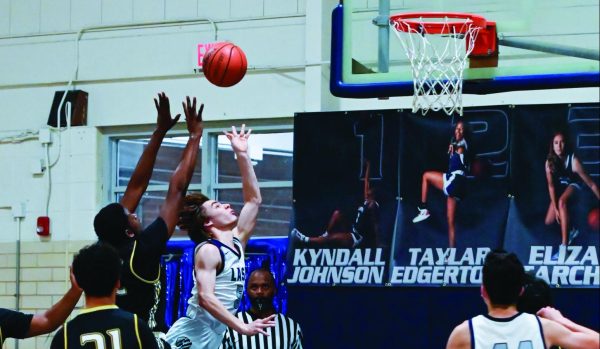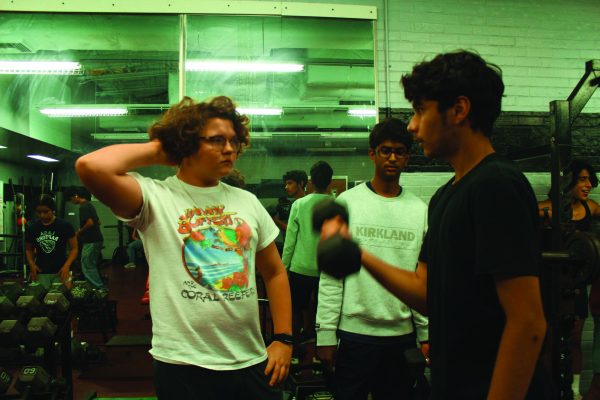Run Mary Cain, Nike Scandal
February 18, 2020
Mary Cain is a professional middle-distance runner who signed with Nike to run with coach Alberto Salazar on the company’s Oregon Project in 2013. Cain was considered “the fastest girl in America” during that time, but quit the project mere years after beginning and completely fell off of the professional running radar until November 2019.
The project was an effort by Nike to bring together some of the world’s most elite athletes, including British runner Mo Farah and American runner Kara Goucher, to train together in high altitude-induced environments. On October 7th, the project was shut down by Nike after Salazar was banned from the sport for 4 years by the United States Anti Doping Agency (USADA) earlier that week. It was whistleblower Kara Goucher who alleged that Salazar had broken Anti Doping regulations by using testosterone supplements, the supplement L-Carnitine and even went as far as to tamper with the doping tests. It didn’t take long for another whistleblower to come forward about more issues that occurred during Alberto Salazar’s time with the Nike Oregon Project.
On November 7th 2019, one month after the USADA banned Salazar, Mary Cain released a video and an opinion piece in The New York Times in which she alleged that she was “emotionally and physically abused” while training with Nike under Salazar. Her training program, created by Salazar and endorsed by Nike, pressured her into getting thinner at an unhealthy rate through dieting and diuretics (the latter of which is banned by the USADA). Her mental health deteriorated quickly, and her career as a professional athlete fell by the wayside.
While true that being fit is essential for world-class athletes, Salazar and his all-male coaching team pressured Cain into losing an unhealthy amount of weight based on an arbitrary number not backed up by research or scientific evidence. There were no sports psychiatrists present and no registered sports dietitian to advise Salazar or his coaching staff.
Cain said that Salazar would weigh her in front of other athletes including her teammates and competitors which disrupted her training and performance at meets. The shaming and pressure on her weight continued to the point where Cain became suicidal and began cutting herself. When Cain spoke to Salazar and his training team about her mental health, she was ignored. After a meet in 2015 when Cain did not perform as well as Salazar would like, he yelled at her in front of all the other athletes, berating her that her failure at the meet was because she had gained weight and that if she didn’t lose weight she would continue to run poorly.
The humiliation and abuse Mary Cain endured took its toll on her body and her career as a professional runner suffered greatly as a result. Her story is an example of the way female athletes are pushed to train based on an all male perspective that is not necessarily backed up by science. Mary Cain was coached by an all-male coaching staff that did not understand the needs of her body. Cain lost her menstrual cycle for over three years and developed a higher risk of infertility and osteoporosis, a condition that leaves bones fragile and more susceptible to breakage. She later broke five bones due to this.
Amenorrhea, or the absence of menstruation, is abnormally common for female athletes, especially in endurance-based sports like running that are often paired with low body weight. This condition is especially prevalent among athletes when the stress put on their body from intense training is coupled with a lack of nutrition. The health issues that Cain developed during her time under Alberto Salazar’s coaching were the reason she didn’t compete after 2016. In 2014, Cain won gold at the World Junior Championships for the 3000 meters and in 2015 she improved her time on the 3000 meters by almost 10 seconds. Later, in 2016, she won a silver medal at the North American, Central American, and Caribbean (NACAC) Under-23 Championships in Athletics for the 1500 meters representing the Nike Oregon Project. But after 2016, she did not place in any more races because she stopped competing and quit the project. Her professional career never recovered.
More women need to be part of coaching in sports to balance perspectives and raise awareness for conditions like amenorrhea. What was left of Cain’s professional career because of unknowledgeable and abusive coaches and staff members is just one example of the consequences that come from lacking female representation in positions of power in sports.
The shaming that Cain endured was detrimental to her mental health and an example of the toxic culture that hounds young women’s bodies in sports. Competition is already extremely high among young professional runners for speed, technique and strength, but young female bodies should not be compared to others and criticized because it perpetuates an unhealthy system that preys on young women.










